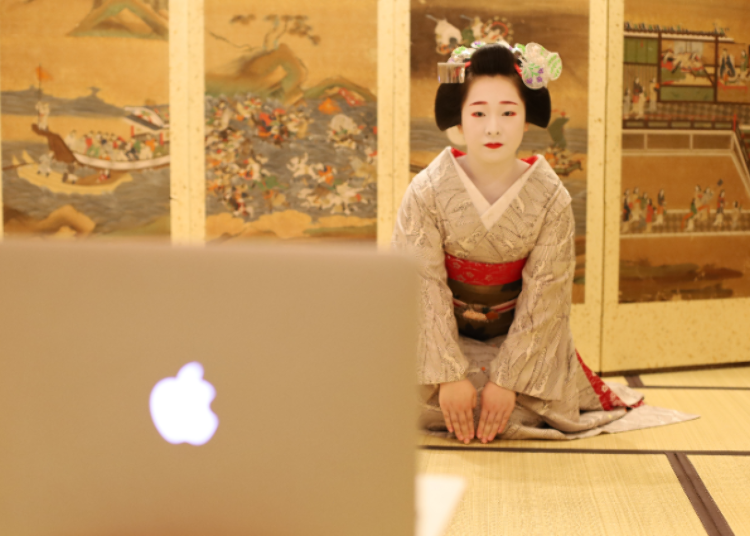
Geisha in Kyoto Struggle to Protect Traditions in Face of Coronavirus
- Written by: Cassandra Lord
Once part of a booming industry displaying the elegant traditions of Japan, Kyoto’s Geisha now find themselves at a crossroads with the spread of the Coronavirus and lack of visitors to the famous Geisha districts.
* Information displayed is as of the time of article production. Prices and contents are subject to change.
* Information provided may change in response to the spread of the novel coronavirus.
* Please contact facility operators directly for the latest information.
Falling on hard times
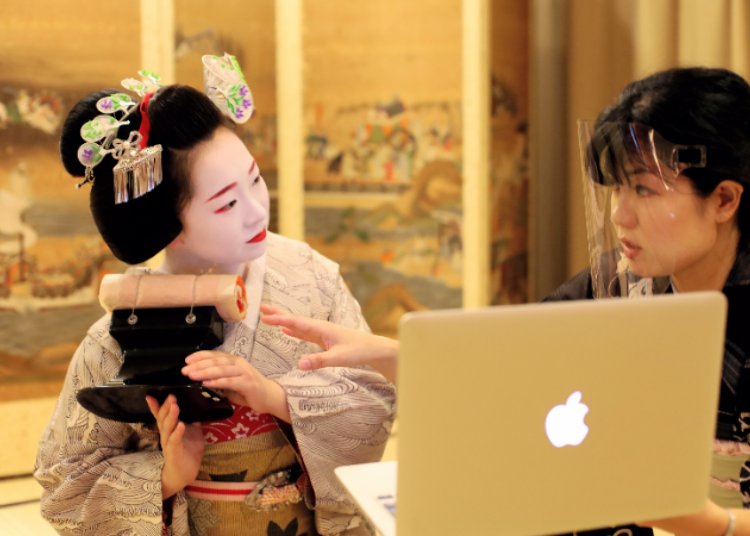
Geisha in Kyoto are finding themselves having to adjust and re-evaluate how to continue to uphold traditions in these trying times of travel restrictions and social distancing.
In early February, teahouses immediately began to see sharp declines in bookings and sales, as customers worried about the spread of the virus in such closed spaces. The traditional annual dances that have continued for decades were also then cancelled due to precautions of congregating in large groups. Of course, the health of the Geisha and the clients were put first, and this was unavoidable. Then in March, each of the Geisha districts were put on high alert, and many cancelled events for the remainder of the year, and nearly all bookings were cancelled in a bid to protect elderly clients.
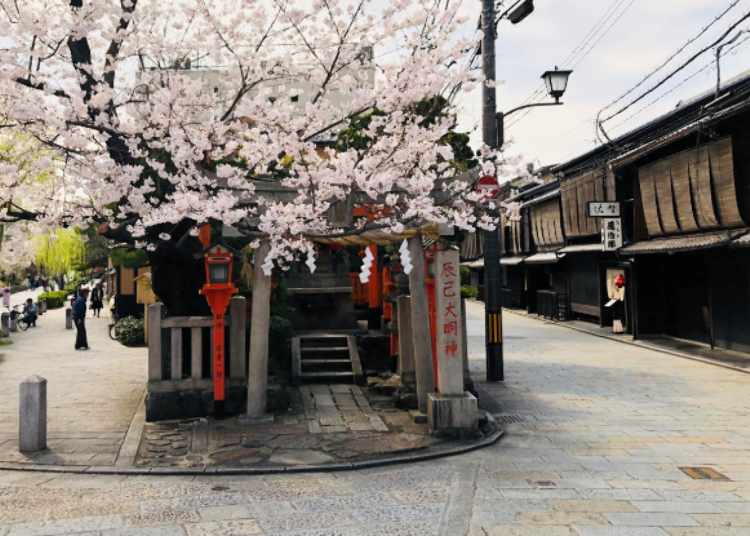
Whilst all this was going on, most Geisha were forced to leave their lodgings and return home to their families. However, this does not mean the Geisha kicked up their feet and sat idly by while the country was on lockdown. The Geisha continued to diligently practice the arts online with their teachers, and many helped their local communities by sewing face masks with traditional materials. These traditional materials were made from the same <@Tenugui|@> (decorative cloths or hand towels) that the Geisha would normally have handed out during special celebrations, and over 400 of these masks were sewn by hand.
Closed for the first time since the war

In April, the government issued an emergency shutdown which closed the five Geisha districts of Kyoto*, and all businesses ceased to a halt. This is said to have been the first time that all the Geisha districts have been forced to close since World War II. The Geisha industry was really struggling.
The Kyoto Geisha Association (Ookini Zaidan) provided a stipend of 100,000 yen per person to support the Geiko and Maiko, but all expenses considered, such as training and high-quality clothing, this was but a small victory. Thus, locals began to set up separate crowdfunding campaigns to help the Geisha community, one of which is still running.
*The five Geisha districts of Kyoto: Kamishichiken, Gion Kobu, Ponto-Cho, Miyagawa-Cho, and Gion Higashi
Reopening of the Geisha districts
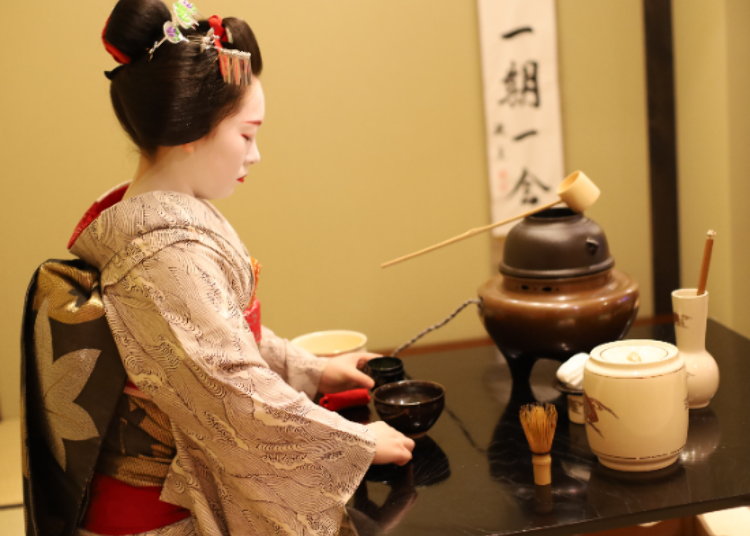
On June 1, the Geisha districts were opened once again. But now there are new rules for interacting with their esteemed customers.
The Geisha must now remain 1-2m apart from guests, cannot speak when pouring sake, have a limited time they can spend in one room, and must adhere to a 10pm curfew. In turn, guests from outside of Kyoto must be screened before even booking an appointment to meet the Geisha. Some regions of Japan have a particularly high concentration of coronavirus cases, and some guests from these areas are currently being refused entry to avoid further spread of the virus.
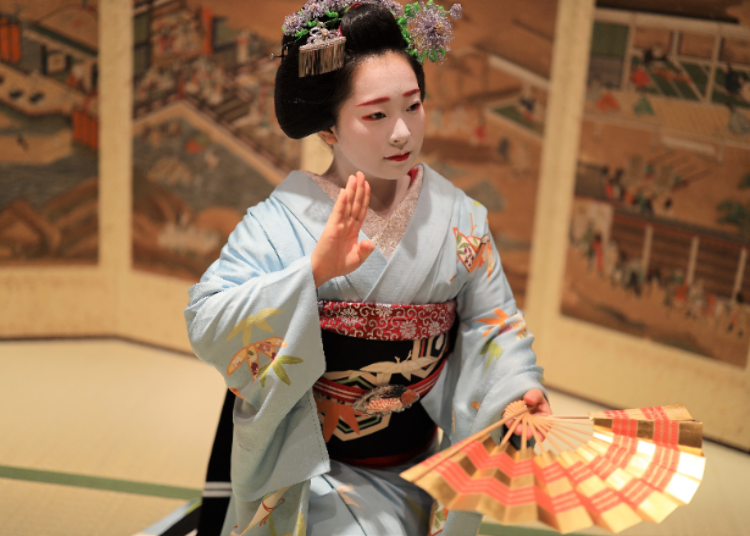
But, even with these new measures, with the second wave and renewed government statements discouraging evening activities and visiting entertainment venues, many events were still not held this summer in Kyoto. Most Geisha have continued to stay in their hometowns outside of Kyoto.
One Geisha who remained within Kyoto remarked “I think many of those who left may not come back at all and quit this profession if the pandemic does not end soon.”
How the Geisha are coping and renewing the Geisha scene
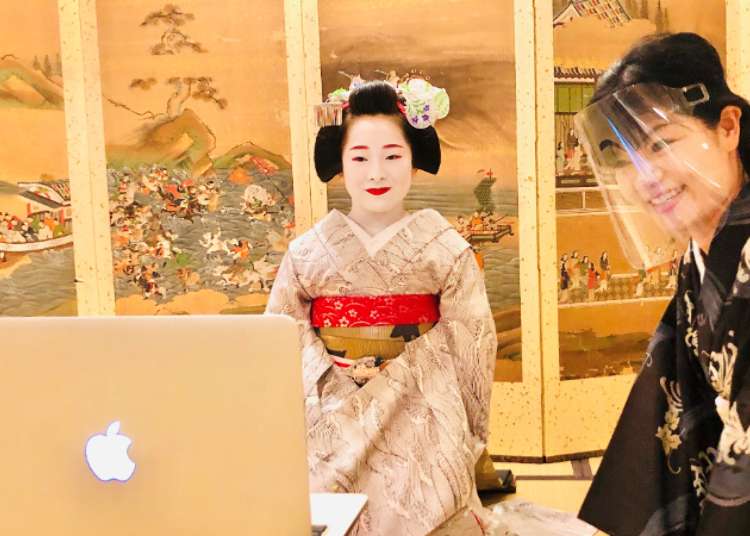
What was once a close, intimate, and decidedly traditional experience is now something that has been pushed into the modern, technological world. Geisha are taking their talents online and sharing the experience with people from all over the globe.
However, this presents an interesting opportunity for international guests. It was once nigh on impossible for first-timers to meet true Geisha in Kyoto, because of a rule known as “ichigensan okotowari,” meaning a personal reference is necessary for meeting a Geisha. Now, with these online meetings, for the first time ever rules are relaxing and people can meet real Kyoto Geisha online.
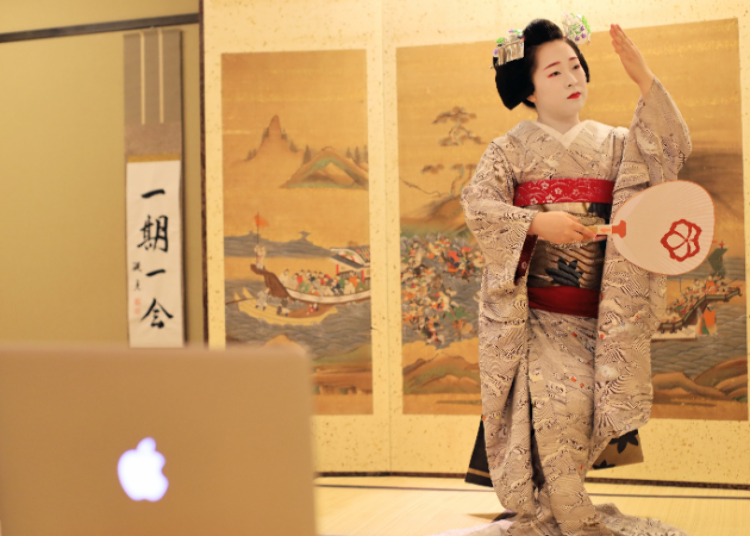
To facilitate this, the Kimono Tea Ceremony KYOTO MAIKOYA has started a reservation service where people can book a Geisha meeting online or face to face (or mask to mask) easily. Although the Geisha Museum run by the same company will close its doors indefinitely, instead, these sessions will feature apprentice Geisha, known as Geiko or Maiko, in their full outfits and accessories that often take 2-3 hours with assistance to put on. The Geisha will interact with the customer for one-hour sessions, having conversations, dancing, and even performing tea ceremonies online.
For those with more of an interest in the background and history of Geisha, guests can opt to speak with a Geisha house owner to learn about Geisha training, and what a day in the life of an apprentice Geisha is like. The course aims to cover the history, how Geisha learn the arts, how they must dress and prepare each day, and how they interact with customers of all ages.
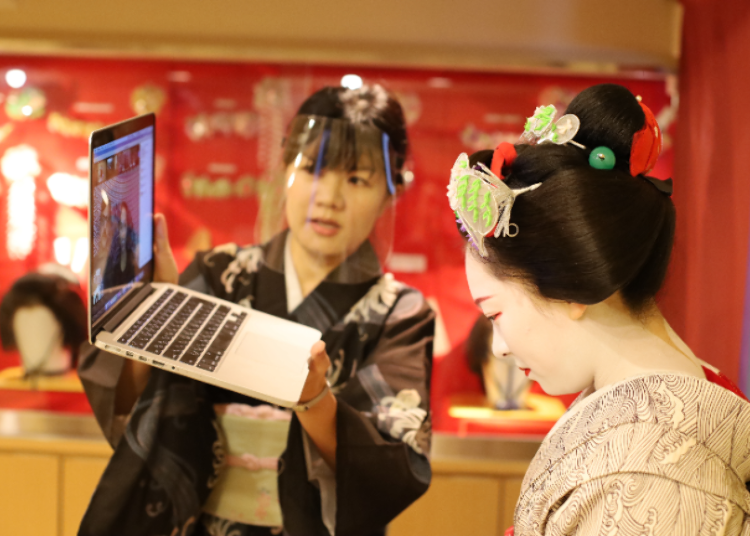
These online Geisha experiences may be considered somewhat pricey in comparison to other online Zoom classes, but Mr. Acar of KYOTO MAIKOYA thinks that it would be disrespectful to the genuine Kyoto Geisha for a lower fee, especially given how much effort goes into preparation.
If you would like to book a session and support the traditional Kyoto arts, see below:
Cassandra Lord is a British journalist specialising in food, travel, and culture, and has been in Japan for five years after studying Japanese at Edinburgh University for four. With a year of experience as co-editor for LIVE JAPAN, Cassandra has since transitioned to freelance writing, contributing to a variety of platforms including The Japan Times and Tokyo Weekender. During her time in Japan she has visited 25 prefectures, with a goal to eventually visit all 47. She also manages her own YouTube channel, "Cassandra Lord", which is dedicated to all things related to Japanese culinary culture. She also works as a translator and photographer.
*Prices and options mentioned are subject to change.
*Unless stated otherwise, all prices include tax.
Popular Tours & Activitiess
Recommended places for you
-

Kasuga-taisha Shrine
Shrines
Nara, Ikoma, Tenri
-

Jukuseiniku-to Namamottsuarera Nikubaru Italian Nikutaria Sannomiya
Izakaya
Kobe, Sannomiya, Kitano
-

Kambei Sannomiyahonten
Yakiniku
Kobe, Sannomiya, Kitano
-

Kanzenkoshitsuyakinikutabehodai Gyugyu Paradise Sannomiya
Yakiniku
Kobe, Sannomiya, Kitano
-
Goods

Yoshida Gennojo-Roho Kyoto Buddhist Altars
Gift Shops
Nijo Castle, Kyoto Imperial Palace
-

ISHIDAYA Hanare
Yakiniku
Kobe, Sannomiya, Kitano
-
Ad

Discover Timeless Beauty: Kimono-en, a Web Magazine Exploring the Spirit of Kimono
-

Celebrate a Dreamy Barbapapa Christmas at JR Osaka Station's Twilight
by: Guest Contributor
-
Ad

Café Bahnhof in Osaka: The home-roasted coffee that captivated G20 leaders!
-
Ad

Recharge and Relax with a Healing Getaway at Kamenoi Hotel Toba
-

Everything You Need to Know About teamLab Biovortex Kyoto (2025 Insider Guide)
by: Wemmy Chau
-

Kyoto's Hidden Treasures Open This Winter! Enjoy Exclusive Access to 15 Rare Cultural Sites (Jan-Mar 2026)
by: Guest Contributor
Inspiration for Accommodations
-

Spacious Family Hotel in Namba: 20 Comfortable Stays for Family Fun
-

Charming Hotels to Enjoy the Spectacular Views of Arashiyama's Autumn Leaves from Your Room
-

Experience Stunning Views of Osaka Castle from Private Spaces: Top Hotels Near Osaka Castle
-

Recommended by Visitors! Arashiyama's Best-Rated Hotels
-

Family-Friendly Universal Studios Japan Hotel with Excellent Access
-

Enjoy a Comfortable Stay in Osaka! 10 Hotels with Convenient Airport Shuttle Services
-

Top 10 Recommended Hotels Near Namba Station with Great Access
-

Enjoy Night Views from Your Room! Recommended Hotels in Namba Area
-

Picking the Perfect Plan: 3 Ways to Explore Sake in Nada-Gogo, Kobe
by: WESTPLAN
-

History and Sustainable Brewing: World-Renowned Fukuju Sake at Kobe Shushinkan
by: WESTPLAN
-

Inside Kobe Tower: Fun Things to Do at the Symbol of Kobe
-

Popular Food at Universal Studios Japan
by: WESTPLAN
-

11 Selected Kimono Rental Shops in Kyoto: Take a Stroll in Traditional Japanese Clothing
-

Visiting Tsutenkaku Tower: Osaka's Retro Icon in the Heart of Shinsekai
by: Guest Contributor
- #best gourmet Osaka
- #things to do Osaka
- #what to do in kyoto
- #what to bring to japan
- #best gourmet Kyoto
- #new years in Osaka
- #what to buy in nanba
- #Visiting Osaka
- #onsen tattoo friendly arima
- #daiso
- #Visiting Kyoto
- #best japanese soft drinks
- #japanese fashion culture
- #japanese convenience store snacks
- #japanese nail trends













